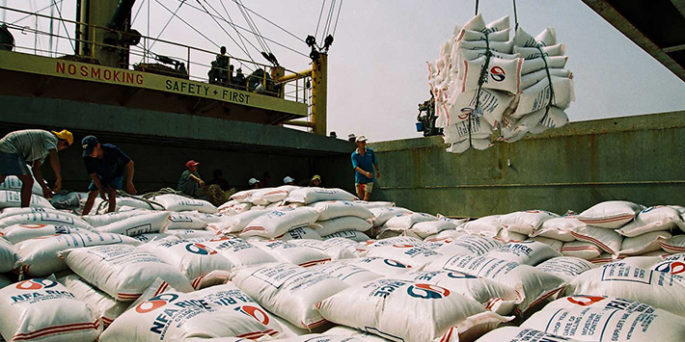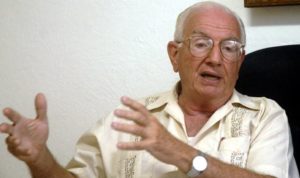
The Cuban economy: Buying abroad
LAS TUNAS — In mid-2017, the social networks in Cuba were stirred by the rumor that the bureau of Customs would raise the duties on various household items imported by Cubans as they returned from abroad.
The commotion raised the issue that car parts, cell phones, garments, electrical appliances and a great many other items intended for commercial sale enter the country inside the baggage of thousands of private individuals.
This should not lead us to believe that the socialist state enterprises have given in excessively when it comes to imports. In fact, imports provide most of what Cuba needs to stay afloat. The goods brought in by ordinary citizens are just a tiny portion of the nation’s total imports.
After decades of trying to replace imports, Cuba remains highly dependent on them, even as it stands 112th in world rankings, according to the Observatory of Economic Complexity (OEC).
So low a ranking does not minimize the value of imports to the island. Look at the most frequently purchased products — poultry, wheat, oil, powdered milk, corn — and you’ll realize that the absence of any item will cause serious problems for everyone here.
Using the same criteria of monetary spending, the OEC’s summary states that China, Spain, Brazil, Canada and Italy, in that order, are Cuba’s main suppliers. This is not surprising because Washington’s economic blockade reduced to minute levels the island’s trade with the United States, which until 1959 had been Cuba’s natural partner.
Talk about a total substitution of imports as a formula for development is denied by the reality that, according to the OEC, Cuba’s imports rose from $5.5 billion in 2010 to $6.8 billion in 2015.
Nevertheless, that evaluation does not take into account the direct repercussion of ceasing to buy a specific product, even if the cost of obtaining it is lower with respect to other products.
That’s what happens with oil, whose prices have dropped in recent years, and therefore, in terms of value, is below the funds needed to buy food. However, nobody doubts that oil is literally essential for Cuba today.
According to Unión Cuba Petróleo (CUPET), the country has increased its extraction of crude compared with the 1990s, but those amounts are far from meeting the country’s needs, which this year will be around 7.8 million tons.
Every see-saw in the oil market becomes quickly evident in Cuba’s dynamics of production. The most recent example came with the Venezuelan political crisis, which reduced the supplies of crude to Cuba to 72,000 barrels per day. The shortfall was covered quickly by purchases from Algeria and Russia, according to Reuters.
‘Once the ship sails in’
That’s what businessmen call the moment when a factory hungry for raw materials starts operations, or a new project is concluded. In the condition of an open economy and in a country that lacks major natural resources, such as Cuba, the dependence on imports is something natural and will continue to be so.
Until 1991, the mercantile flow from abroad represented 40 percent of the overall GNP. However, in the case of food, its role was as much as 50 percent; in the case of oil, the supplies essential to agriculture and manufacture rose to 90 percent, according to economist Emily Morris.
The sudden cut in the mutually advantageous links with eastern Europe meant a 78-percent drop in imports between 1990 and 1993, according to an analysis by Cuba’s Central Bank.
Gradually, and despite Washington’s sanctions against Cuba’s trade, the island managed to find new suppliers in China, western Europe and, later, in Venezuela. Meanwhile, the American siege persists. The détente during the Obama administration did not destroy the mechanisms of persecution against potential suppliers to Cuba’s economy.
Today, the landscape has not changed in essence: Cuba remains strongly tied to foreign suppliers. In fact, at least one of every four investments made here depends directly on what comes from abroad, said Marino Murillo, vice president of the Council of Ministers, two years ago.

The data supplied by economist José Luis Rodríguez indicate that the economic recession, finally crystallized in late 2016, was reflected long before in the field of imports. He explains that in 2015, as the planned investments did not materialize, imports dropped by 10.4 percentage points when compared with 2015.
Nevertheless, Parliament decided to revert the negative trend and approved in its 2016 Plan a 6.9-percent increase in foreign purchasing.
However, Rodríguez points out, a drastic reduction in the available freely-converted currency forced the authorities to take a more objective view of the landscape and, when the Legislative met in mid-2017, it became clear that imports would continue to decline, not because the national industry provided replacements but because the public coffers lacked the necessary funds.
Seeking a balance
Thus battered, it would be logical to insist on a model of total substitution of imports, but Prof. Zulma Ledesma Martínez, Ph.D. in Accounting and Financial Sciences at Las Villas Central University (UCLV), does not believe this is possible.
To insist on that daydream, she opines, would be to stumble on “the mistake of wasting scant national resources and incurring in a chain of consequences that are unfavorable to the country: investments that place a heavy burden on the country’s external finances, productions with a high rate of discontinuity and costly paralysis of its processes, underutilized labor collectives that reduce their future productivity and, in sum, low economic efficiency.”
A concrete example of this comes from UCLV professors Inocencio Raúl Sánchez Machado and Marlen Penichet Cortiza, along with Eugenia Matilde Sánchez Pentón, economic director of the Sagua la Grande Electrochemical Enterprises.
Cuba, they say, imports 567,000 tons of rice every year, more than half of its domestic demand, estimated at 800,000 tons. The ideal thing would be to replace this volume with domestically-grown rice.
The core of the question is how to do it, they say. What’s needed is “to produce with quality standards that, in the shortest period of time, will allow us to talk about replaceable goods in terms of product homogeneity, not about a national rice without sufficient quality, unfit for comparison with imported Vietnamese rice.”
“This way,” they say, “if we consider the feasibility of importing rice from Southeast Asia, we’d have to consider the levels at which this product is priced in this part of the world, the rate of exchange between the different currencies of our economies, and the demand and capacity for national production.”
That might be part of the solution to the daily challenges of the Cuban economy. Speaking in economic terms, we would need analyses of competitiveness and economic efficiency for each production, which should crystallize in more precise feasibility studies and include both the macroeconomic and the social judgments.


